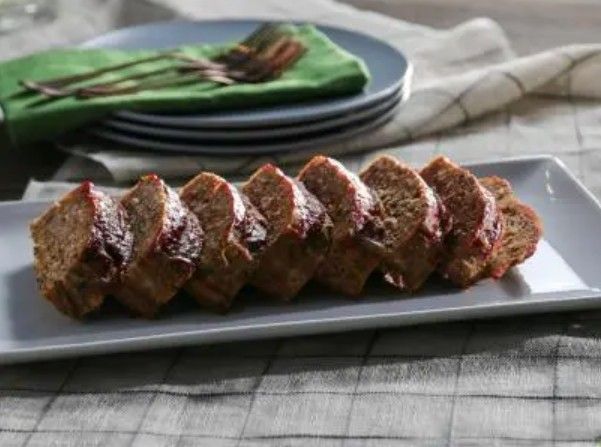Platanos: A Classic Dish
Platanos: Your Ultimate Guide to Cooking and Enjoying This Classic Dish Platanos, generally appertained to as plantains, are further than just a fruit — they’re a foundation of culinary tradition in numerous societies. Whether you’re frying, incinerating, or mashing them, plátanos can fluently transfigure into a snack, side dish, or cake. Their versatility and unique flavor make them a must-have component in every kitchen. What Exactly Are Platanos? Plátanos are a type of banana, but they’re not the same as the sweet bananas frequently eaten raw. These stiff fruits need to be cooked and are generally larger than regular bananas. They’re used in dishes worldwide, with flavors ranging from mildly savory to sweet, depending on there is a dotage. Difference between Platanos and Bananas Feature Plátanos (Plantains) Bananas Size Larger and thicker Smaller and slimmer Texture (Raw) Firm and starchy Soft and sweet Flavor (Raw) Bland, slightly bitter Sweet Culinary Use Must be cooked Often eaten raw Ripeness Stages Green (savory), Yellow (sweet), Black (dessert) Green (less sweet) to Yellow (sweet) Cooking Methods Fried, baked, grilled, boiled, mashed Rarely cooked, often blended in desserts Why Are Plátanos So Popular? Plátanos have earned their spot in global kitchens for several reasons Rigidity:Perfect for sweet or savory dishes. Nutritive Value Packed with potassium, fiber, and vitamins. Vacuity Extensively set up in requests worldwide. Their capability to suit every mess of the day makes them a go- to component for creative cooker. Health Benefits of Plátanos Plátanos aren’t just succulent, they’re good for you, too. Adding them to your diet offers several benefits Energy Boost Their complex carbohydrates give long-continuing energy. Digestive Support High in fiber, they prop digestion and promote gut health. Heart Health The potassium content helps regulate blood pressure. Rich in Vitamins, Plátanos contain vitamins A and C, essential for impunity and skin health. Ripe or Green? Choosing the Right Plátano for Your Dish The stage of ripeness determines how you’ll use plátanos: Green Plátanos: Firm and savory, ideal for tostones or chips. Yellow Plátanos: Sweet and soft, perfect for frying or baking. Blackened Plátanos: Fully ripe, sweet, and ideal for desserts. Each stage unlocks unique flavors, allowing for endless culinary possibilities. Ingredients for a Simple Fried Plátano Recipe Here’s what you need for a quick and delicious fried plátano recipe: 2 ripe plátanos (yellow with black spots). You can use cooking oil painting (vegetable, coconut, or olive oil painting). As an Option, You can use Salt, sugar, or cinnamon for added flavor. How to Prepare Fried Plátanos Selecting the Right Plátanos Choose ripe plátanos with yellow skin and black spots for a sweet, caramelized flavor. Peeling the Plátanos plátanos require a little effort to peel, not like bananas. After cutting off both ends, make a hollow along the skin, and smoothly remove it with your fingers or a knife. Slicing the Plátanos Slice diagonally into pieces about ½ inch thick. This ensures even cooking and gives them an appealing shape. Heating the Oil In a skillet, heat 1–2 inches of oil over medium heat. Test with a small piece of plátano—if it sizzles, you’re ready to fry. Frying to Perfection Place the slices in the pan, avoid ing overcrowding. Fry each side for 2–3 minutes until golden brown. Remove and drain on paper towels. Pro Tips for the Best Fried Plátanos Use Ripe Plátanos: For sweetness and soft texture. Control the Heat: Medium heat prevents burning. Season Immediately: Sprinkle salt or cinnamon right after frying. How to Serve Fried Plátanos Fried plátanos can shine in many ways: As a Snack, enjoy with a sprinkle of sugar or cinnamon. With Dips Brace with sour cream, guacamole, or racy mayo. As a Side Dish, serve with rice, sap, or grilled funk. Sweet fried plátanos also double as a cake when speckled with honey or outgunned with ice cream. Alternative Ways to Cook Plátanos While frying is classic, there are other ways to prepare plátanos: Baking: A healthier option that caramelizes the natural sugars. Boiling: Great for green plátanos served with stews. Grilling: Adds a smoky, charred flavor to ripe plátanos. Mashing: Perfect for traditional dishes like mofongo or fufu. Each method highlights a different aspect of this versatile fruit. Creative Twists on Fried Plátanos Take your fried plátanos to the next level with these ideas: Caramelized Beating Add brown sugar and cinnamon for redundant agreeableness. Inelegant Delight, top with melted rubbish for a savory twist. Plátano Nachos Subcaste fried slices with sap, rubbish, and jalapeños for a unique snack. Plátanos in Global Cookeries Plátanos are a cherished component worldwide. Then’s how they’re enjoyed in different societies. Latin America Used in dishes like empanadas, patacones, and arr oz con plátano. Caribbean, frequently paired with haul funk or served as a sweet side dish. Africa Boiled or fried and served with racy stews or roasted flesh. Their wide appeal speaks to their versatility and universal flavor. Plátanos for Every mess Plátanos aren’t limited to one part of the day — they’re perfect for breakfast, lunch, and regale Breakfast Brace with eggs, avocado, and toast. Lunch Serve alongside grilled meat, rice, and sap. Regale, add as a sweet or savory side to roasted pork or funk. Cake muzzle with chocolate, honey, or caramel sauce. Plátano- Grounded Goodies to Try Ripe plátanos make excellent bases for goodies. Then are some ideas to inspire you Plátano Pudding Subcaste fried slices with delicate custard. Plátano cutlet, Crush and singe with spices for a wet treat. Plátano Foster Sauté with adulation, brown sugar, and rum for a tropical twist on Bananas Foster. How to Store and Reheat Fried Plátanos To keep your plátanos fresh and crisp Store in a watertight vessel in the fridge for over to 3 days. Heat again in a pan on medium flame to regain their crispiness. Avoid microwaving, as it makes them soppy. Tips for Buying and Storing Fresh Plátanos When buying plátanos Look for firm green bones if you plan to cook savory dishes. Choose unheroic or blackened bones for frying … Read more









